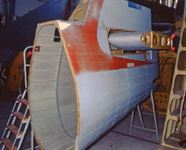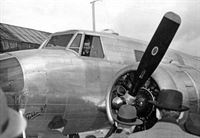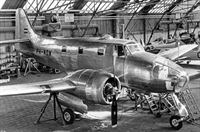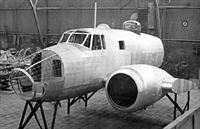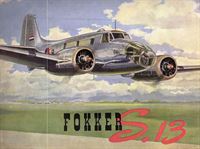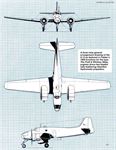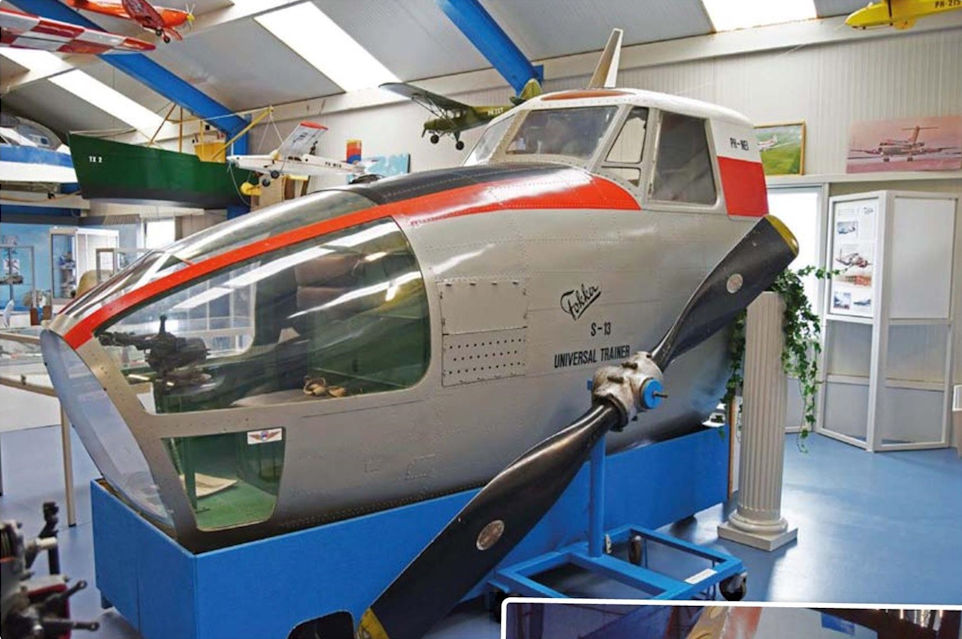
Фотографии
-
Aviation Historian 18 / N.Braas - Unlucky 13: Fokker's forgotten twin trainer
Регистрационный номер: PH-NDW [3] On its completion the sole S.13 was registered PH-NDW, which marks it wore on an overall natural-metal finish with a small Dutch tricolour flag on the fin. The type was initially given the name Universal Trainer, but the new moniker was soon dropped, S.13 being used during its development.
-
Aviation Historian 18 / N.Braas - Unlucky 13: Fokker's forgotten twin trainer
In April 1950 the S.13 was removed from the Dutch civil register and given the military serial D-101. Accordingly, the civil registration was removed and replaced by a standard red, white, blue and orange Dutch roundel, the aircraft retaining its naturalmetal finish and the tricolour on the fin.
-
Aviation Historian 18 / N.Braas - Unlucky 13: Fokker's forgotten twin trainer
Регистрационный номер: PH-NEI In June 1951 the S.13 was put back on the Dutch civil register as PH-NEI. The aircraft also received an attractive new colour scheme, the upper fuselage, dorsal fairing and leading edge of the fin being painted white. The lower fuselage remained in natural metal, separated by a red cheat line.
-
Aviation Historian 18 / N.Braas - Unlucky 13: Fokker's forgotten twin trainer
The nose section of the S.13 on display at the Luchtvaart Museum on the Wesf Frisian island of Texel in May 2016.
-
Aviation Historian 18 / N.Braas - Unlucky 13: Fokker's forgotten twin trainer
Other surviving parts of the sole prototype include the empennage, the fin and tailplane of which have been severely cropped, as seen here while at the Technical University at Delft. The remains of the tail were donated to the Aviodrome museum at Lelystad, where they remain today in storage.
-
Aviation Historian 18 / N.Braas - Unlucky 13: Fokker's forgotten twin trainer
The S.13 aloft in its military markings. The trainee bombardier and an observer were stationed in the nose, which was framed by steel tubes and enclosed by six transparent panels which afforded excellent visibility. A folding table was fitted to the starboard side of the "greenhouse", with a panel for instrumentation mounted on the port side.
-
Aviation Historian 18 / N.Braas - Unlucky 13: Fokker's forgotten twin trainer
Регистрационный номер: PH-NDW [3] Fokker test pilot Hugo Burgerhout beams from the cockpit of PH-NDW after the S.13’s maiden flight on March 11, 1950. Burgerhout was a former Dutch Navy pilot who had seen combat while flying Dornier Do 24 flying-boats in the Netherlands East Indies during the Second World War.
-
Aviation Historian 18 / N.Braas - Unlucky 13: Fokker's forgotten twin trainer
Регистрационный номер: PH-NDW [3] The completed S.13, with its registration on the rear fuselage, at Schiphol, from where it made its first flight on March 11, 1950. Final assembly had been undertaken at Schiphol, the airframe having been transported by barge from the Fokker factory at Amsterdam-Noord. A new Fokker factory was opened at Schiphol in 1951.
-
Aviation Historian 18 / N.Braas - Unlucky 13: Fokker's forgotten twin trainer
Construction of the S.13 prototype at Amsterdam-Noord in 1949. In the background are one of the two S.13 mock-ups (right) and a mock-up of the forward fuselage and centre section of the S.14 Machtrainer, which would make its first flight in May 1951.
Другие самолёты на фотографии: Fokker S.14 Mach-Trainer - Нидерланды - 1951
-
Aviation Historian 18 / N.Braas - Unlucky 13: Fokker's forgotten twin trainer
With the configuration of the new twin-engined trainer decided, two mock-ups were built at Fokker’s factory at Amsterdam-Noord. This is the second mock-up, which was initially fitted with a dorsal turret, as seen here, to be incorporated into production models for gunnery training, but it was ultimately deleted.
-
Aviation Historian 18 / N.Braas - Unlucky 13: Fokker's forgotten twin trainer
The original 1950 Fokker brochure for the S.13, featuring a handsome illustration of the type in service as a crew trainer on its cover. After the war the newly-established Dutch Directorate of Flying Training was supplied with 25 Avro Ansons and 28 Airspeed Oxfords for twin-engined training purposes. Development of the S.13 was intended to replace those ageing types with a homegrown twin trainer.
-
Aviation Historian 18 / N.Braas - Unlucky 13: Fokker's forgotten twin trainer
A three-view general arrangement drawing of the S.13 as featured in Fokker's 1950 brochure for the type. The Pratt & Whitney Wasp engines drove two-bladed fully-feathering Hamilton Hydromatic propellers.




